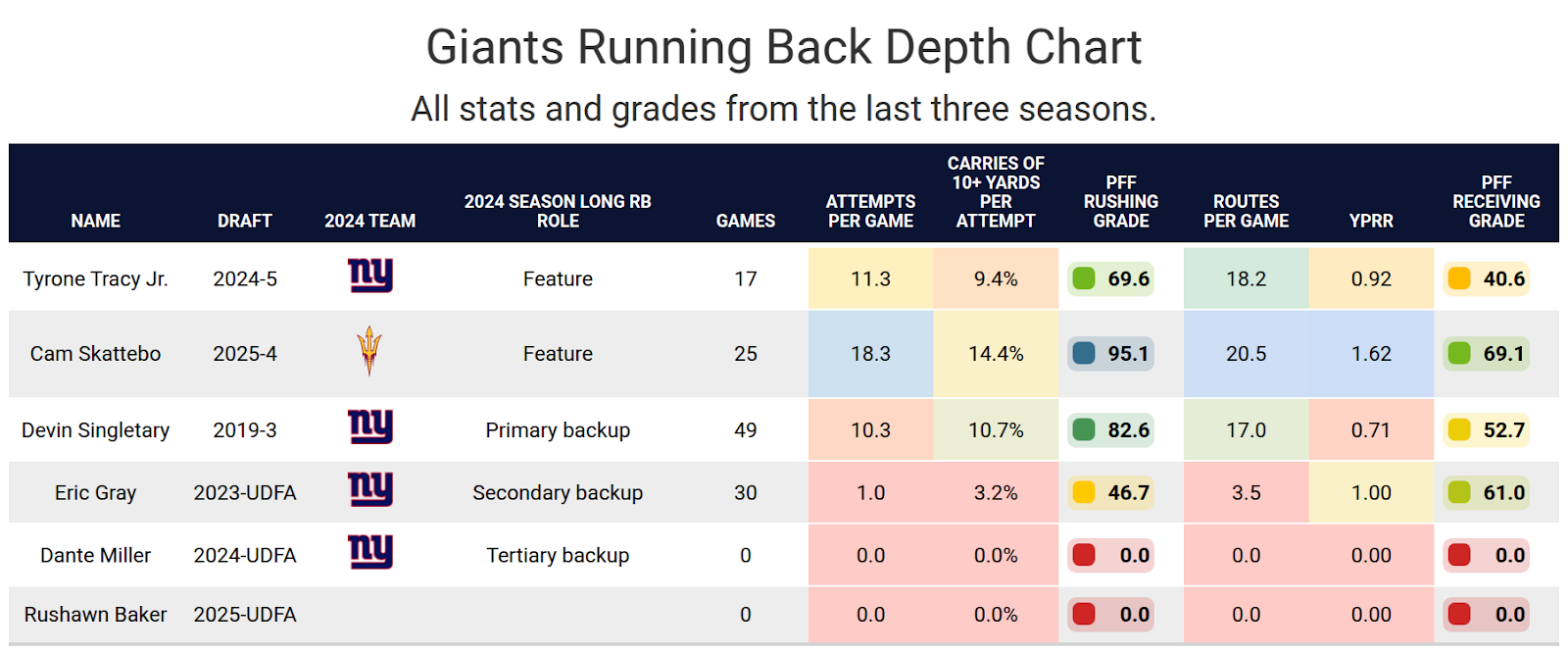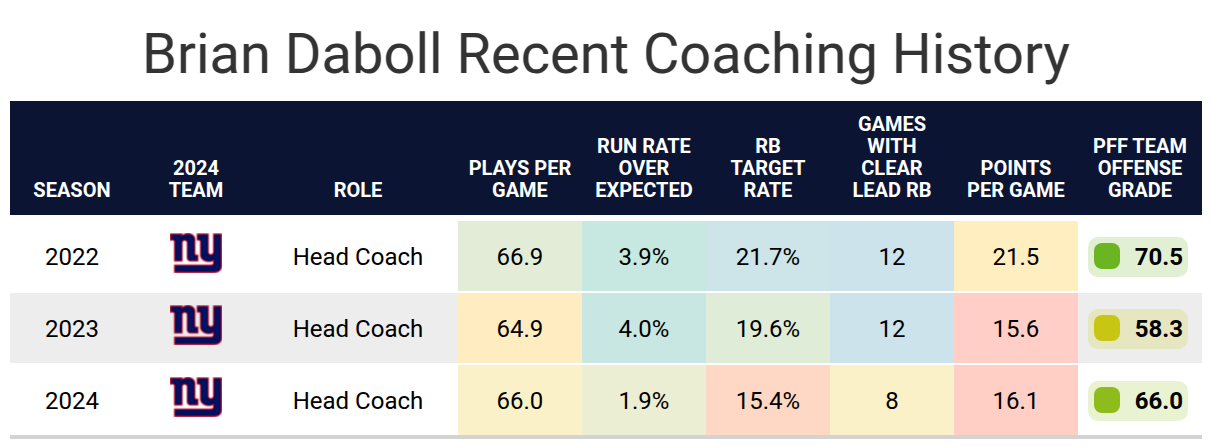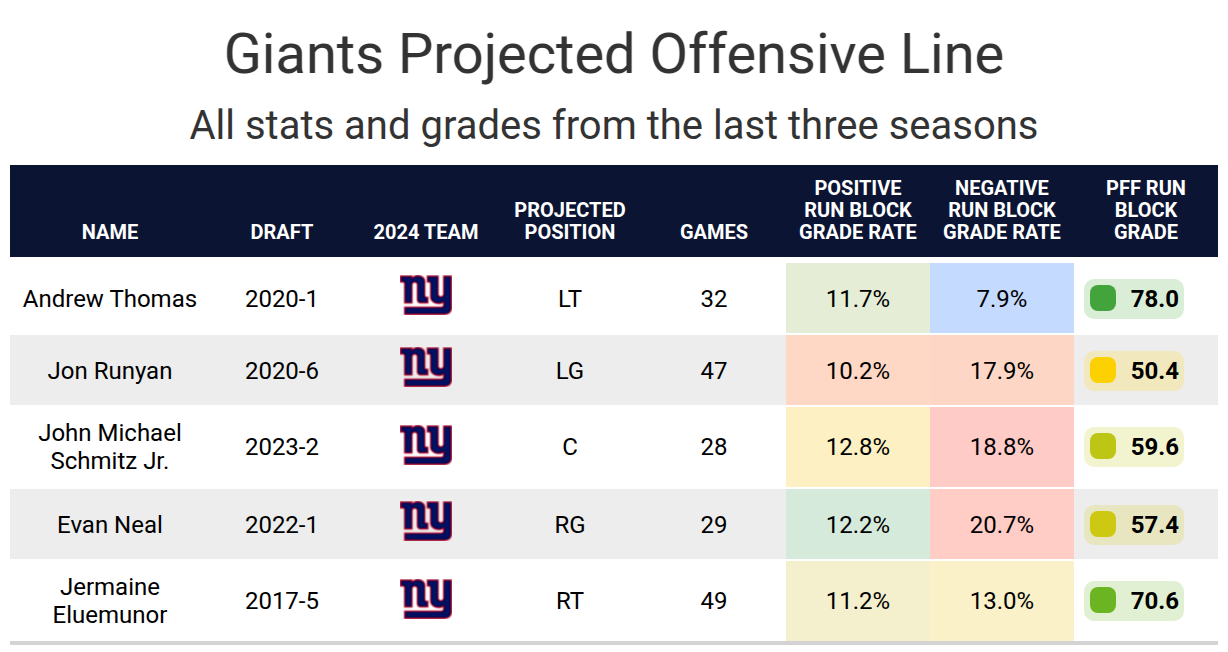Fantasy Football 2025: RB Tyrone Tracy Jr. player profile

2YE1M44 New York Giants running back Tyrone Tracy Jr. (29) celebrates his touchdown during the second half of an NFL football game against the Pittsburgh Steelers, Monday, Oct. 28, 2024, in Pittsburgh. (AP Photo/Matt Freed)
By
- Tyrone Tracy Jr. exceeds expectations as a rookie: Most fifth-round rookie running backs don’t end up as their team’s primary starter during their rookie season, but Tracy became the weekly starter in October.
- The New York Giants drafted Cameron Skattebo: There is a decent chance the fourth-round rookie could take Tracy’s job as the Giants’ starting running back.
- Subscribe to PFF+: Get access to player grades, PFF Premium Stats, fantasy football rankings, all of the PFF fantasy draft research tools and more!
Estimated Reading Time: 5 minutes

PFF’s Fantasy Football Player Profile series delivers the most in-depth fantasy football analysis available for the 2025 season.
Using PFF’s exclusive data, we evaluate player performance, competition for touches and how teammates and coaching staffs
Last updated: 7:15 a.m. Saturday, May 31
Player performance
The New York Giants chose not to re-sign Saquon Barkley after the 2023 season. Instead, they added veteran Devin Singletary and Tyrone Tracy Jr. in the fifth round of the 2024 NFL Draft. Singletary was the starter during the first four weeks of the season. Tracy started playing only a few snaps, particularly in passing situations on longer drives. In Week 3, the Giants trusted Tracy to take some drives for himself.
Singletary suffered a groin pull, causing him to miss two games. Tracy made the most of his opportunities, finishing with 18 carries for 129 yards in his first start in addition to 50 rushing yards with a touchdown and another 57 receiving yards in his second start. That was enough for Tracy to win the starting job even when Singletary was back in Week 7. Tracy had two more big games in Weeks 8 and 10, finishing with 20 carries for 145 yards and a touchdown and 18 carries for 103 yards and a touchdown.
He fumbled twice in that Week 10 game and fumbled again after the bye in Week 12, so he lost his starting job in Week 13 but still played in 73% of New York’s offensive snaps in that game. Tracy was RB10 over Weeks 5-10, but he wasn’t nearly as effective after the bye week. He finished with less than 60 rushing yards in each of his final seven games and was held to 4.2 rushing yards per carry or less in each of his last six.
The two areas of his play that stood out the most were his ability to avoid negative yards and his ability to break very long runs. He avoided negative yards on 93.2% of his runs last season, the third-best rate among running backs with at least 170 attempts. He also broke a run of 30 yards or more on 25% of his starts, which was the fifth-best rate among running backs.
Projected role
Tracy was an every-down back but had a high snap rate on short-yardage situations and a low rate on third downs. Tracy was a former wide receiver, making it a little odd that third downs were the one situation in which he played less than 50% of New York’s offensive snaps. The Giants brought back the same running backs from last season, including Singletary and Eric Gray but also drafted Cam Skattebo at the start of the fourth round of the draft.
Skattebo is both a shorter and bigger running back than Tracy. Given the size of the two backs and Tracy’s history as a wide receiver, it would make sense for Skattebo to play on early downs, particularly in short-yardage situations, while Tracy plays more on passing downs. However, Skattebo was used much more as a receiver in college compared to other running backs of a similar size.
This means it’s completely up in the air how snaps will be distributed between these two running backs just from their characteristics. It’s also entirely possible that Singletary also remains involved in the run game.


Impact of teammates
Tracy will have Brian Daboll as his head coach for a second-straight season. His tendencies changed a lot from 2023 to 2024 because the team no longer had Saquon Barkley and yet, the team managed more points per game. While Barkley was a feature back for New York when healthy, Daboll’s backfields with the Buffalo Bills were often a committee, where one back received roughly 60% of the opportunities, one got 30% and the other earned 10%. That is often how the backfield was last season, as Eric Gray was the 10% while either Singletary or Tracy was at the 60%, depending on who was the starter. We expect either Tracy or Skattebo to be the 60% while the other is at 30% and Singletary is at 10%, but that is no guarantee.
Daboll’s offenses typically throw to running backs at a high rate. That changed last season, but we could see their running back target rate bounce back up this season, assuming Russell Wilson is the quarterback. Wilson’s running backs were among the league leaders in targets each of the last two seasons despite playing for two different teams. That should be good news for whoever gets the receiving work.
New York’s offensive line is mainly composed of Andrew Thomas and journeyman linemen who are only borderline NFL starters. The Giants didn’t make any substantial changes to their line in the offseason. They finished as a bottom-10 team in terms of run-blocking grade, which was part of the problem for the offense. This was a big reason both New York running backs struggled last season. Skattebo generally runs better when the offensive line has a poor block compared to most running backs, but he doesn’t have the breakaway speed to take advantage when the blocks are perfect. This makes Skattebo a uniquely strong fit for their line and could point toward Skattebo leading the team in carries.


Bottom line
Tracy had a stretch of games where he was a strong fantasy starter last season, but he slowed down as the season progressed. He will compete with Cam Skattebo for the starting job. He is unlikely to have any fantasy value if Skattebo becomes the starter, but if he can keep his playing time, there is more opportunity for receiving production this year with Russell Wilson at quarterback.

Footnotes
- Statistics in tables and charts were chosen based on their ability to predict future fantasy performance on a per-game or per-opportunity basis or to describe the player relative to others at the same position.
- “Opportunities” are defined as passing dropbacks, rushing attempts and routes run as a receiver.
- Numbers are provided either by season or based on the past three years. For rookies, only college statistics are included. For non-rookies, only NFL statistics are considered, regardless of whether they played in college within the previous three years.
- As college competition is easier than NFL competition, most rookies are likely to see a decline from their historical numbers.
- Only FBS data is considered for college players and comparisons.
- Kneel-downs are removed from rushing data to provide cleaner quarterback rushing rate statistics.
- The table colors in this article range from blue (indicating good/high) to red (indicating bad/low).
- All percentiles and color codings compare the given player to others with a high sample of opportunities. Generally, the cutoff is one-third of the possible opportunities in the sample. If a player does not meet the threshold, they are still included in the comparison, though their results may appear better or worse than expected due to the smaller, less predictive sample size.
- Information on utilization classifications and their importance can be found here for running backs, wide receivers and tight ends.








